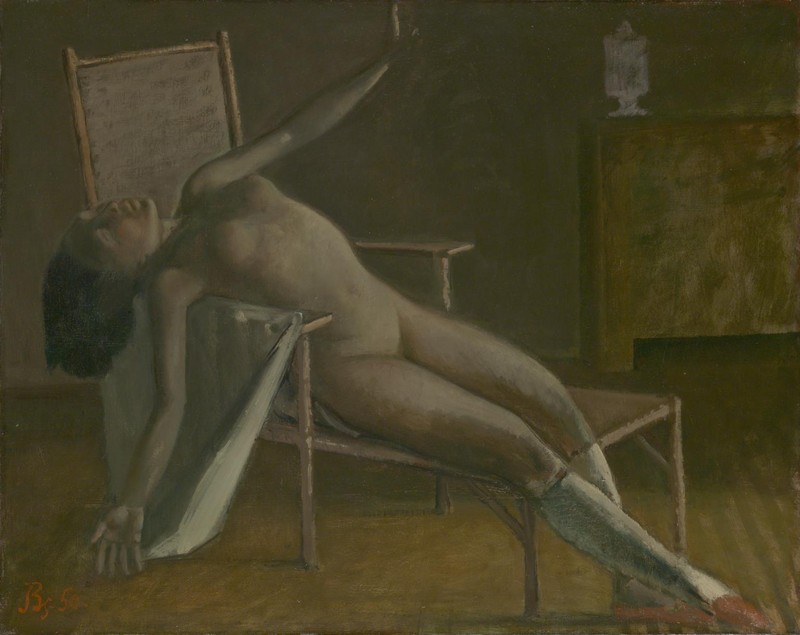The Reclining Nude
07 Jan 2013 - 28 Sep 2014

Balthus (Balthasar Klossowski de Rola)
Nude on a Chaise Longue, 1950
Oil on canvas
852 x 1039 mm
Bequeathed by Simon Sainsbury 2006, accessioned 2008© ADAGP, Paris and DACS, London 2002
Nude on a Chaise Longue, 1950
Oil on canvas
852 x 1039 mm
Bequeathed by Simon Sainsbury 2006, accessioned 2008© ADAGP, Paris and DACS, London 2002
The works gathered in this room explore the reclining nude as a tradition reinvented in the light of twentieth-century sexual openness.
The reclining female nude was a popular subject in nineteenth-century French painting. The odalisque – originally meaning a slave in a Turkish harem – was often placed in an exotic setting, with suggestions of sexual submissiveness. In the twentieth century, artists were able to present sexuality more frankly, without the orientalist trappings of their predecessors. At the same time, their depiction of sensual attraction was complicated by Freud’s uncovering of repressed subconscious drives with which the surrealists, in particular, were fascinated.
Whether in painting or sculpture, Henri Matisse regarded the reclining nude as a form around which a composition could be constructed, its curves becoming angular and more abstracted. By contrast, Henri Laurens’s sculpture Autumn allows the body to burgeon into ripe, fruitful forms.
For Pablo Picasso, the nude was charged with physical energy. His female portraits are habitually seen as commenting on and exploring his own personal relationships. His depictions of the young Marie-Thérèse Walter, for example, were both playful and unabashedly erotic, while the late portraits of his wife Jacqueline Roque reflect his confrontation with ageing and declining sexual prowess.
The reclining female nude was a popular subject in nineteenth-century French painting. The odalisque – originally meaning a slave in a Turkish harem – was often placed in an exotic setting, with suggestions of sexual submissiveness. In the twentieth century, artists were able to present sexuality more frankly, without the orientalist trappings of their predecessors. At the same time, their depiction of sensual attraction was complicated by Freud’s uncovering of repressed subconscious drives with which the surrealists, in particular, were fascinated.
Whether in painting or sculpture, Henri Matisse regarded the reclining nude as a form around which a composition could be constructed, its curves becoming angular and more abstracted. By contrast, Henri Laurens’s sculpture Autumn allows the body to burgeon into ripe, fruitful forms.
For Pablo Picasso, the nude was charged with physical energy. His female portraits are habitually seen as commenting on and exploring his own personal relationships. His depictions of the young Marie-Thérèse Walter, for example, were both playful and unabashedly erotic, while the late portraits of his wife Jacqueline Roque reflect his confrontation with ageing and declining sexual prowess.
